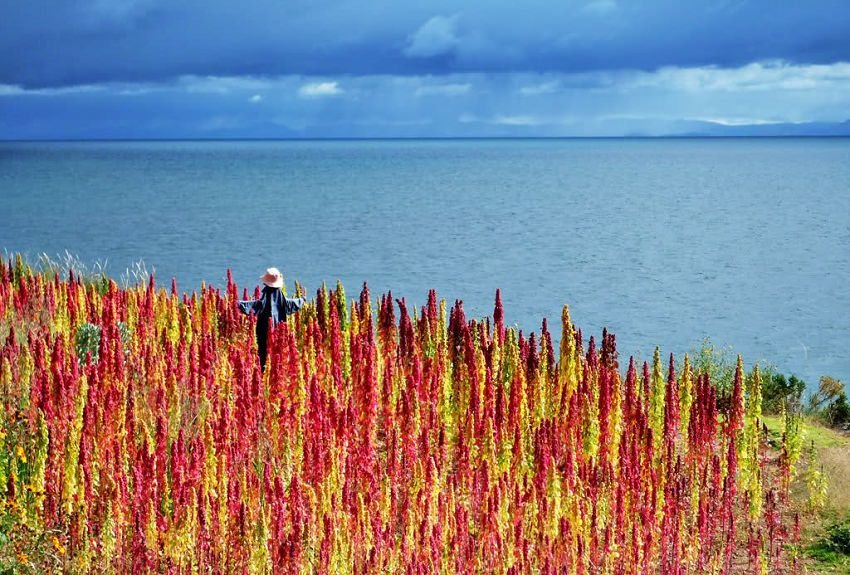Learn how to grow quinoa in this article. Growing quinoa needs to fulfill a few requirements which are given below.

USDA Zones– 4 – 10
Difficulty– Easy to Moderate
Other Names– Chenopodium quinoa (Scientific Name), Quinua, Quinua, Kiuna Quinhua, Huauzontle, Huauthili and Nuttall’s goosefoot,
Quinoa is an annual plant it is cultivated for grains. Grown for over 5000 years and was part of the staple diet of pre-Columbian civilizations. Today, it is consumed as an alternative to rice.
It is an edible plant acknowledged for its high nutritional value.
Propagation and Planting Quinoa
Growing quinoa is possible from seeds. Seeds are sowed directly in the garden because it does not transplant well. Sow seeds once the soil has warmed around 50- 60 F (10 – 15 C).
Before planting quinoa seeds, dig the ground to loosen and aerate the soil and kill the competitive weeds. Sow the seeds 1/2 inches deep. Seedlings will germinate within one week or so, once germinated and slightly grown, thin them out so that each plant will remain 30 cm apart.
Requirements for Growing Quinoa
Position
Quinoa prefers a moderately cool climate and can survive light frost but not heavy freeze. It can not grow in areas where temperatures are usually above 95 F (35 C) or below 30 F (-1 C).
Choose an area of land that receives full sun, though it could withstand partial shade, with a consequent decrease in the harvest.
Soil
Soil preparation is very important for growing quinoa. To cultivate quinoa, optimally use loamy, fertile soil, semi-deep and with good drainage. It can also grow in more adverse soil types like sandy, clayey and even moderately saline soil, but again yield can be lower. It prefers a slightly acidic to slightly alkaline pH (6 to 8.5).
Watering
Quinoa is well adapted to dry conditions and have no problem with minimal water. Water plants only in case of extreme heat or prolonged drought. Although it needs regular watering during the flowering period.
Quinoa Plant Care
Weeding
Quinoa may look very similar to weeds. It grows slowly at first and will be affected by weeds, do regular weeding during this period and mulch around the plant to suppress unwanted plants. Once it reaches about 30 cm height, it begins to grow much faster and becomes self-sufficient.
Pests and diseases
If you are growing quinoa, you should know it is related to spinach and beetroot and therefore it is susceptible to similar diseases and pests. However, it is generally remain pest free but can be attacked by aphids, caterpillars and beetles. Keep the plant healthy and treat with organic pesticide immediately to deter away the pests. However, a mature plant can usually withstand any damage caused by these small insects without much difficulty.
Harvest and storage
To know more about harvesting quinoa, read this article.




Hi
Am interested in companion plants for quinoa
Thank you
I shall try here. My question was : how deep should a pot be to grow Quinoa plant on a balcony?
I tried without knowing to put a few seeds in a 5cm seed cardboard pot.They came up quick, so I did put 3 of them in a 15cm pot. I can see that it is too crowded, and as the tallest plant is over 1m high, and the pot blows over so I have to tie the plant to the railing, I wonder “how deep should a pot be in order to accomodate one plant. It is a north facing balcony, and temps are ok.
I suppose I could just keep on trying, but someone must know the length of the root of a mature quinoa plant